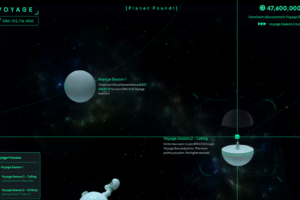As we step into 2024, the altcoin market is poised for significant evolution, driven by technological advancements, regulatory developments, and shifting investor sentiment. Altcoins, which encompass all cryptocurrencies other than Bitcoin, have gained traction as viable alternatives, each offering unique features and use cases. The landscape is increasingly characterized by innovation, with projects focusing on scalability, interoperability, and real-world applications.
This diversification is not merely a trend; it reflects a maturation of the cryptocurrency ecosystem, where investors are looking beyond Bitcoin to explore the potential of various altcoins. The altcoin market in 2024 is marked by a growing recognition of the importance of utility and functionality. Investors are becoming more discerning, seeking projects that demonstrate real-world applicability and robust technological foundations.
This shift is evident in the increasing market capitalization of altcoins, which now represents a significant portion of the overall cryptocurrency market. As institutional interest continues to rise and regulatory frameworks become clearer, the altcoin market is expected to attract even more participants, further solidifying its place in the financial landscape.
Key Takeaways
- The altcoin market in 2024 is characterized by a diverse range of cryptocurrencies offering various functionalities and use cases.
- Ethereum (ETH) continues to dominate as the leading smart contract platform, driving innovation in decentralized finance (DeFi) and non-fungible tokens (NFTs).
- Ripple (XRP) remains a prominent global payment solution, facilitating fast and low-cost cross-border transactions for financial institutions and businesses.
- Litecoin (LTC) is positioned as the “silver to Bitcoin’s gold,” offering faster transaction times and lower fees while maintaining a strong store of value proposition.
- Cardano (ADA) represents the third-generation blockchain, focusing on scalability, sustainability, and interoperability to enable a more inclusive and sustainable financial system.
- Polkadot (DOT) stands out for its interoperability and scalability, aiming to connect multiple blockchains and enable them to work together seamlessly.
- Chainlink (LINK) plays a crucial role in bridging the gap between smart contracts and real-world data, providing secure and reliable oracles for decentralized applications.
- The future of altcoins in 2024 looks promising, with continued innovation and development driving the adoption of blockchain technology and decentralized applications.
Ethereum (ETH): The Reigning Smart Contract Platform
Ethereum’s Dominance in the Altcoin Market
Ethereum remains at the forefront of the altcoin market in 2024, solidifying its position as the leading smart contract platform. With its transition to Ethereum 2.0, which introduced a proof-of-stake consensus mechanism, the network has significantly improved its scalability and energy efficiency. This upgrade has not only enhanced transaction speeds but also reduced gas fees, making it more accessible for developers and users alike.
A Thriving Ecosystem of Decentralized Applications
The Ethereum ecosystem is thriving, with thousands of decentralized applications (dApps) spanning various sectors, including finance, gaming, and supply chain management. The rise of decentralized finance (DeFi) has further cemented Ethereum’s dominance. DeFi platforms built on Ethereum allow users to lend, borrow, and trade assets without intermediaries, creating a financial ecosystem that operates 24/7.
Advancements in Scalability and Innovation
In 2024, Ethereum continues to attract developers who are eager to build innovative solutions on its blockchain. The introduction of layer-2 scaling solutions like Optimistic Rollups and zk-Rollups has alleviated congestion on the mainnet, enabling faster transactions and lower fees. As Ethereum evolves, it remains a critical player in shaping the future of decentralized applications and smart contracts.
Ripple (XRP): The Global Payment Solution

Ripple has carved out a niche for itself as a global payment solution, focusing on facilitating cross-border transactions with speed and efficiency. In 2024, Ripple’s technology is being adopted by financial institutions worldwide, allowing them to settle international payments in real-time. The XRP Ledger, known for its low transaction costs and high throughput, positions Ripple as a formidable competitor in the remittance space.
By leveraging blockchain technology, Ripple aims to streamline traditional banking processes that often involve lengthy delays and high fees. The ongoing legal battle with the U.S. Securities and Exchange Commission (SEC) has added complexity to Ripple’s journey.
However, despite regulatory challenges, Ripple has continued to expand its partnerships with banks and payment providers globally. The company’s focus on compliance and transparency has garnered trust among financial institutions looking to modernize their payment systems. As Ripple continues to innovate and adapt to regulatory landscapes, it remains a key player in the altcoin market, driving the adoption of blockchain technology in traditional finance.
Litecoin (LTC): The Silver to Bitcoin’s Gold
Litecoin has long been regarded as the silver to Bitcoin’s gold, offering a faster and more efficient alternative for peer-to-peer transactions. In 2024, Litecoin continues to uphold its reputation as a reliable digital currency with a strong community backing. Its unique features, such as a shorter block generation time and a different hashing algorithm (Scrypt), enable quicker transaction confirmations compared to Bitcoin.
This makes Litecoin an attractive option for users seeking faster transaction speeds without sacrificing security. The recent developments surrounding Litecoin include the integration of privacy features through the Mimblewimble protocol. This enhancement allows users to conduct transactions with increased confidentiality while maintaining the integrity of the blockchain.
As privacy concerns grow among cryptocurrency users, Litecoin’s commitment to providing optional privacy features positions it favorably in the competitive altcoin landscape. With ongoing improvements and a dedicated user base, Litecoin remains a significant player in the cryptocurrency market.
Cardano (ADA): The Third-Generation Blockchain
Cardano has emerged as a prominent third-generation blockchain platform that aims to address the scalability and sustainability issues faced by its predecessors. In 2024, Cardano’s unique approach to development—rooted in academic research and peer-reviewed protocols—sets it apart from other blockchain projects. The platform’s proof-of-stake consensus mechanism not only enhances energy efficiency but also promotes decentralization by allowing users to participate in network governance through staking.
The launch of smart contracts on Cardano has opened up new possibilities for developers and businesses looking to build decentralized applications. With a focus on interoperability and user-friendly interfaces, Cardano is attracting projects that seek to leverage its robust infrastructure. The platform’s commitment to social impact initiatives further enhances its appeal; Cardano aims to provide financial services to underserved populations globally through partnerships with governments and NGOs.
As Cardano continues to evolve and expand its ecosystem, it positions itself as a formidable contender in the altcoin market.
Polkadot (DOT): Interoperability and Scalability

Polkadot stands out in 2024 as a pioneering project focused on interoperability among different blockchains. Its unique architecture allows multiple blockchains to operate seamlessly within a single network, enabling them to share information and assets without intermediaries. This capability addresses one of the most pressing challenges in the blockchain space: fragmentation.
By facilitating communication between diverse chains, Polkadot enhances scalability and fosters innovation across various sectors. The introduction of parachains—independent blockchains that can connect to the Polkadot network—has further expanded its functionality. Developers can create specialized blockchains tailored to specific use cases while benefiting from Polkadot’s shared security model.
This flexibility attracts projects looking for customized solutions without compromising on security or performance. As more parachains launch and integrate with Polkadot’s ecosystem, the network is expected to play a crucial role in shaping the future of decentralized applications and cross-chain interactions.
Chainlink (LINK): Bridging the Gap Between Smart Contracts and Real-World Data
Chainlink has established itself as a vital component of the decentralized finance ecosystem by providing reliable oracles that connect smart contracts with real-world data. In 2024, Chainlink’s technology is increasingly recognized for its ability to enhance the functionality of various blockchain applications by enabling them to access off-chain data securely. This capability is essential for DeFi platforms that rely on accurate price feeds for trading and lending activities.
The growing demand for decentralized oracles has led Chainlink to expand its partnerships across multiple industries, including insurance, gaming, and supply chain management. By collaborating with data providers and enterprises, Chainlink ensures that smart contracts can execute based on real-time information, thereby increasing their utility and reliability. As more projects integrate Chainlink’s oracles into their ecosystems, it solidifies its position as a critical infrastructure provider in the blockchain space.
The Future of Altcoins in 2024
As we navigate through 2024, the altcoin market is set for transformative growth driven by innovation and increased adoption across various sectors. Each altcoin brings unique strengths and capabilities that cater to different needs within the cryptocurrency ecosystem. From Ethereum’s dominance in smart contracts to Ripple’s focus on global payments, Litecoin’s speed, Cardano’s sustainability efforts, Polkadot’s interoperability solutions, and Chainlink’s oracle services—these projects are shaping the future of finance and technology.
The evolving regulatory landscape will also play a significant role in determining the trajectory of altcoins in 2024. As governments around the world establish clearer guidelines for cryptocurrency operations, investor confidence is likely to increase, paving the way for broader acceptance of altcoins as legitimate financial instruments. With technological advancements continuing at a rapid pace and an ever-expanding user base eager for innovative solutions, the future of altcoins appears bright as they carve out their place in the global economy.






















